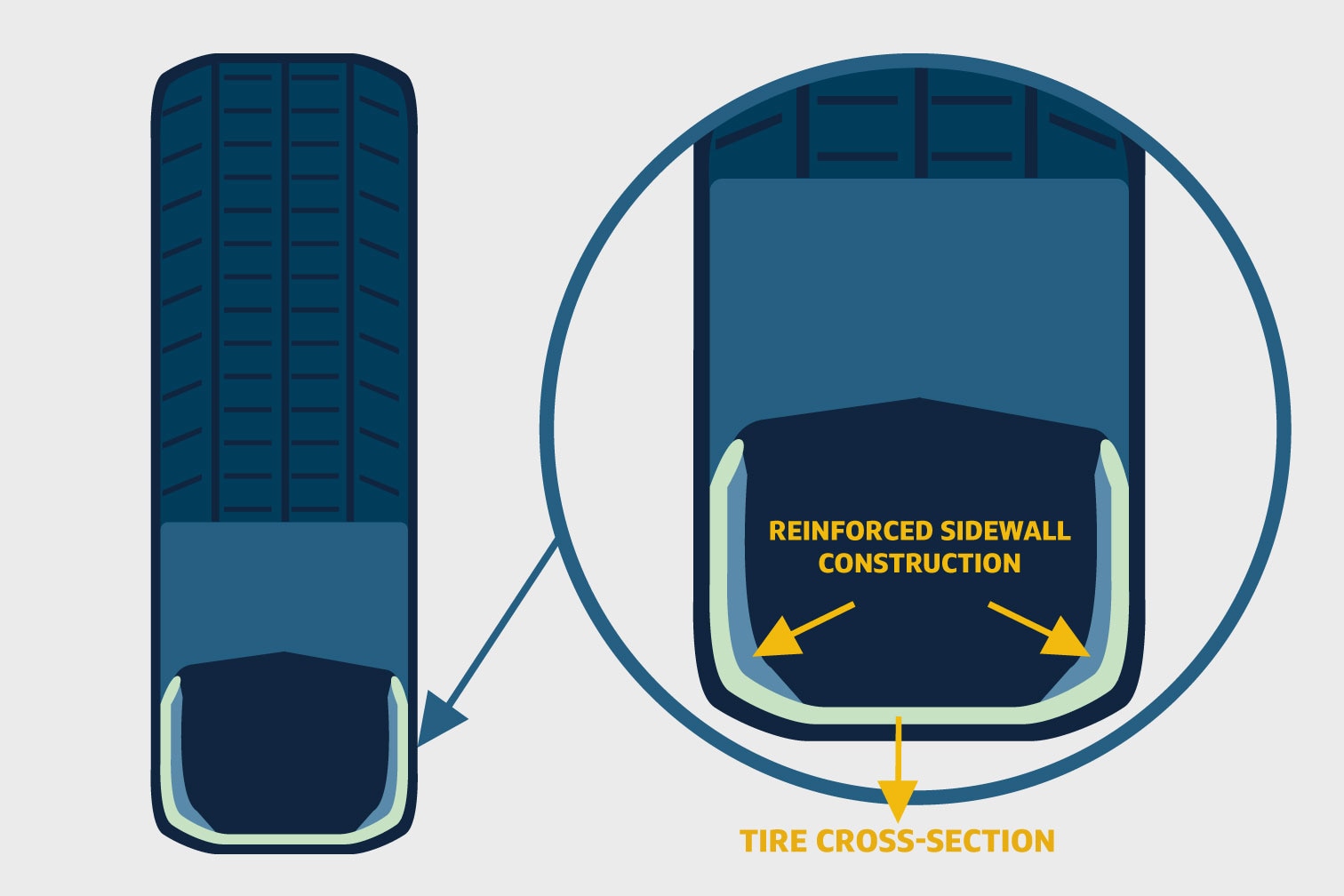What are Run-Flat Tires?
Inflating some perceptions and deflating others about run-flats and the cost of convenience.
 Capital One
Capital One
Article QuickTakes:
Flat tires seem to occur at the worst moments, such as when you’re in a hurry or unprepared or there’s a torrential storm bearing down on you. Run-flat tires offer motorists the ability to drive on a deflated tire for short distances. This makes them both a safety and convenience feature. With run-flat tires, you can safely exit a busy highway and possibly even make it to your destination without having to mount a spare. However, these tires have a few limitations and several characteristics that might reduce their appeal for some drivers.
Here’s a quick spin through some run-flat basics.
What is a Run-Flat Tire?
If you were to try to drive on a conventional tire without air pressure in it, you wouldn’t make it very far. At anything faster than walking speed, the tire sidewall will quickly break down and the tire will eventually separate from the wheel. Run-flat tires feature a reinforced sidewall that can endure the flexing and heat buildup that come with driving on a deflated tire.
Run-flat tires may have been installed on your vehicle at the factory. This is more common on luxury vehicles than mainstream models. They can also be retrofitted to any car, truck, SUV, or van.
Can I Still Drive on a Punctured Run-Flat?
A deflated run-flat tire can support the weight of your vehicle for a brief period, giving you anywhere from 25 to 50 miles of range, depending on the specific model of tire and the vehicle. This distance should be used to get out of harm’s way and to the nearest service station or to your destination, if it is nearby. You should never drive further than you need to on a run-flat tire.
When driving on a flattened run-flat, you should limit your speed to 50 mph, attempt no sudden steering moves, and allow for longer braking distances. You can still experience a blowout with a run-flat which will bring you to a halt, but the car’s behavior is more predictable on the run-flat in this situation.
A pothole or other hard hit may inflict damage beyond the tire. The wheel can bend or crack, and the suspension can become unsafe. You still must be the final judge on what speed is prudent, or whether to drive at all. If you hear horrible grinding noises or have a massive vibration when driving on a run-flat, further damage has likely occurred, and you should pull over and call for a tow truck.
Are There Benefits to Using Run-Flats on My Car?
When a vehicle is designed from the outset to use run-flats, it allows the room typically reserved for a spare tire to be used for other purposes, like a third row of seats or more cargo capacity. This also means cars with run-flat tires almost never have a spare tire or jack.Since you may not notice when a run-flat has lost pressure, cars factory-fitted with run-flats were required to have tire pressure monitoring systems even before the government mandated that feature in 2008 for all vehicles sold in the U.S.
Are There Any Downsides to Run-Flat Tires?
Run-flats tend to have a slightly harder ride quality than conventional tires, though this has improved in the past ten years. A run-flat-shod vehicle will yield slightly lower fuel economy and feel less nimble to the keen driver because of the additional weight in the tires’ sidewalls.
There’s also a tangible price for the convenience of run-flats. They are always more expensive to replace—anywhere from 30% additional to as much as twice the price of comparable conventional tires—and they are more sparsely available among the service industry.
Once used without pressure, some models cannot be repaired and must be replaced. And those run-flats that can be fixed must be thoroughly inspected and repaired correctly before being used again.



